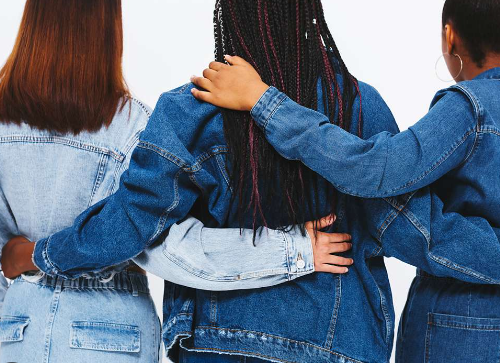Denim is a fabric that has been around for centuries, and its popularity has only grown over time. From its humble beginnings as a sturdy workwear material to its current status as a fashion staple, denim has evolved and adapted to meet the changing needs and tastes of society. In this essay, we will explore the history of denim and how it has transformed from a classic fabric to a contemporary fashion statement.
Denim’s origins can be traced back to the 18th century, when it was first used by French sailors for their workwear uniforms. The fabric was made of a sturdy cotton twill weave that was resistant to wear and tear, making it an ideal material for heavy-duty work clothing. However, it wasn’t until the mid-19th century that denim became popular in America. During the California Gold Rush, Levi Strauss and Jacob Davis created the first pair of denim jeans with copper rivets for added strength. These jeans were initially marketed to miners and cowboys, but they quickly gained popularity among the general public.
Throughout the early 20th century, denim remained a workwear fabric, worn by blue-collar workers and farmers. However, during World War II, denim became a symbol of American patriotism. Soldiers wore denim uniforms, and civilians were encouraged to buy “Victory Jeans” to support the war effort. After the war, denim became a symbol of rebellion, worn by rebels like James Dean and Marlon Brando in films like “Rebel Without a Cause” and “The Wild One.”
The 1960s and 70s marked a turning point for denim. As the counterculture movement gained momentum, denim became a symbol of youth rebellion and individualism. Bell-bottoms, patchwork denim, and embroidered jackets were all popular styles during this time. In the 1980s, denim became a mainstream fashion item, worn by everyone from rock stars to housewives. Designer labels like Calvin Klein and Gloria Vanderbilt made denim more fashionable by adding their logos and creating more fitted styles.
In the 1990s, denim entered a new era of versatility. Grunge fashion brought about a new style of denim, with ripped jeans, oversized jackets, and acid-washed denim. Denim also became more diverse, with new styles like skinny jeans, bootcut, and high-waisted jeans becoming popular. The 2000s saw a return to classic styles, with straight-leg jeans and vintage denim making a comeback.
Today, denim is more versatile than ever. It can be dressed up or down, worn in a variety of styles and colors, and is available in a range of prices. Designer labels like Ralph Lauren, Tommy Hilfiger, and Calvin Klein continue to create high-end denim designs, while fast fashion retailers like H&M and Zara make denim more accessible to the masses.
In addition to its versatility, denim has also become more sustainable. As consumers become more environmentally conscious, many denim brands are using sustainable production methods and materials. This includes using organic cotton, reducing water usage, and incorporating recycled materials into their designs.
In conclusion, denim has come a long way since its humble beginnings as a workwear fabric. From its early days as a symbol of American patriotism and rebellion to its current status as a fashion staple, denim has evolved to meet the changing needs and tastes of society. Whether it’s a classic pair of blue jeans or a trendy denim jacket, denim will always be a timeless fabric that continues to inspire designers and consumers alike.










